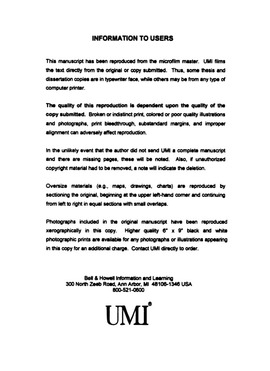| dc.contributor.advisor | Ashby, Michael, | en_US |
| dc.contributor.author | Mcguire, Danny Gordon. | en_US |
| dc.date.accessioned | 2013-08-16T12:30:58Z | |
| dc.date.available | 2013-08-16T12:30:58Z | |
| dc.date.issued | 2000 | en_US |
| dc.identifier.uri | https://hdl.handle.net/11244/5996 | |
| dc.description.abstract | Another part of this work describes the solvatochromatic effect of CpFe(CO) 2(SC6H5) dissolved in different solvents. A blue shift in the UV-vis spectra occurs as CpFe(CO)2(SC6H 5) is solvated in more polar solvents, which is evidence that the ground-state dipole moment is greater than the excited-state dipole moment. | en_US |
| dc.description.abstract | A portion of this work describes intermolecular hydrogen bonding studies using the compound CpFe(CO)2(SC6H 5) as a model system for iron-thiolate proteins. A correlation between the half-wave potential, E1/2, and the force constant, FCO, shows that there is a substantially smaller effect on the half-wave potential for hydrogen bonding compared with protonation, (about 30%). The X-ray crystallographic structures of CpFe(CO)2(SC 6H5) and [CpFe(CO)2(HSC6H5)]BF 4 show that protonation produces a shorter Fe-S bond. This indicates a stabilization of the Fe-S bond due to a weakening of the HOMO Fe(dpi)-S(ppi) antibonding orbital. | en_US |
| dc.description.abstract | Another part of this work describes the synthesis and characterization of CpFe(dppe)(SC6H4-p-Z) where Z = OCH3, H, Cl, NO2, and CF3. A kinetic study of the methylation of CpFe(dppe)(SC6H4-p-Z) by CH3I shows a correlation between the relative donor ability of the aryl substituent and the reaction rate. From a Hammett plot, a value of rho = -2.14 was calculated which indicates a developing positive change on the sulfur center during the course of the reaction. | en_US |
| dc.description.abstract | Electron paramagnetic resonance experiments indicate that the HOMO of the compound [CpFe(dppe)(SC6H4-p-Z)]BF 4, where Z = OCH3, H, Cl, NO2, and CF3, is primarily metal in character. A linear free energy relationship is observed between the g-values and the relavative donor ability of the aryl substituent. Apparently, when the aryl substituent becomes more electron withdrawing and the g-values increase the HOMO becomes more metal in character. | en_US |
| dc.description.abstract | Cyclic voltammetric data of CpFe(dppe)(SC6H4- p-Z) shows a linear free energy relationship between the relative donor ability of the aryl substituent and the half-wave potential of the compounds CpFe(dppe)(SC6H4-p-Z). Also, X-ray crystallographic analysis of CpFe(dppe)(SC6H4- p-OCH3), CpFe(dppe)(SC6H5) and CpFe(dppe)(SC 6H4-p-NO2) shows that the Fe-S bond distances decrease in the order of the derivatives: OCH3 > H > NO2. Apparently, the NO2 substituent best stabilizes the complex by withdrawing electron density from the HOMO which is the dpi-ppi antibonding orbital. | en_US |
| dc.format.extent | xxvi, 232 leaves : | en_US |
| dc.subject | Chemistry, Inorganic. | en_US |
| dc.subject | Electronic excitation. | en_US |
| dc.subject | Chemistry, Organic. | en_US |
| dc.subject | Complex compounds. | en_US |
| dc.subject | Hydrogen bonding. | en_US |
| dc.title | Tuning the frontier orbital character of iron-thiolate complexes. | en_US |
| dc.type | Thesis | en_US |
| dc.thesis.degree | Ph.D. | en_US |
| dc.thesis.degreeDiscipline | Department of Chemistry and Biochemistry | en_US |
| dc.note | Major Adviser: Michael Ashby. | en_US |
| dc.note | Source: Dissertation Abstracts International, Volume: 61-06, Section: B, page: 3057. | en_US |
| ou.identifier | (UMI)AAI9975799 | en_US |
| ou.group | College of Arts and Sciences::Department of Chemistry and Biochemistry | |
